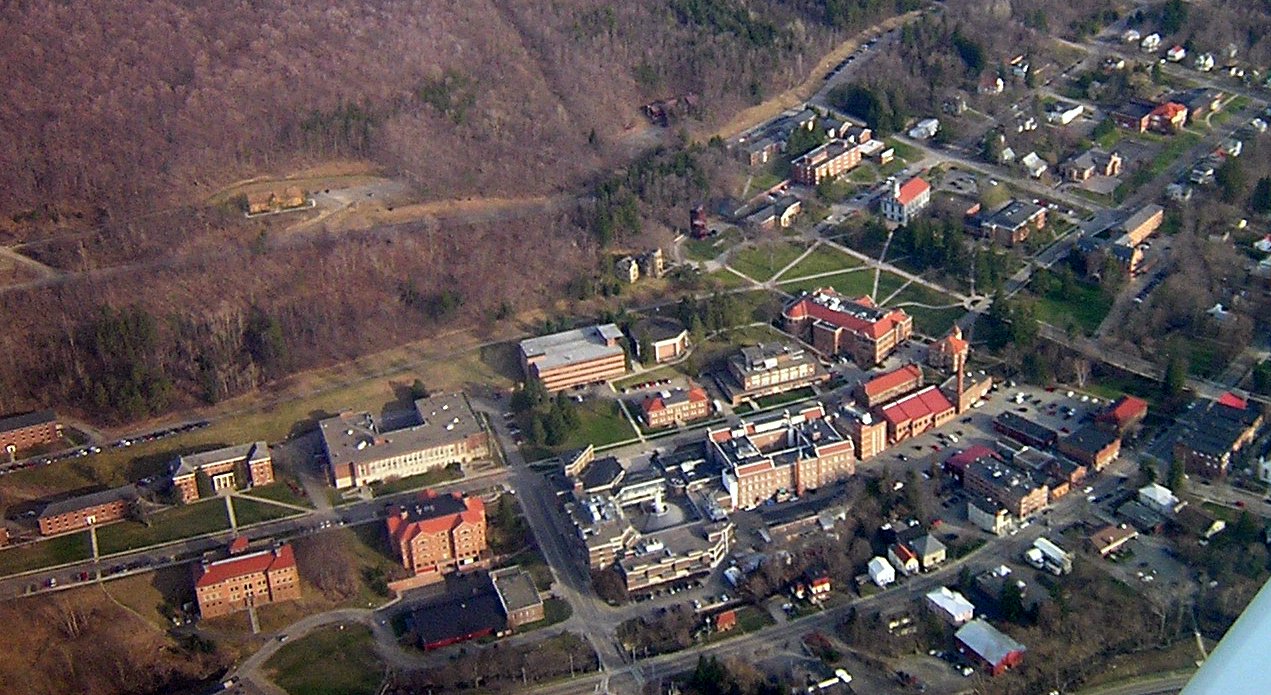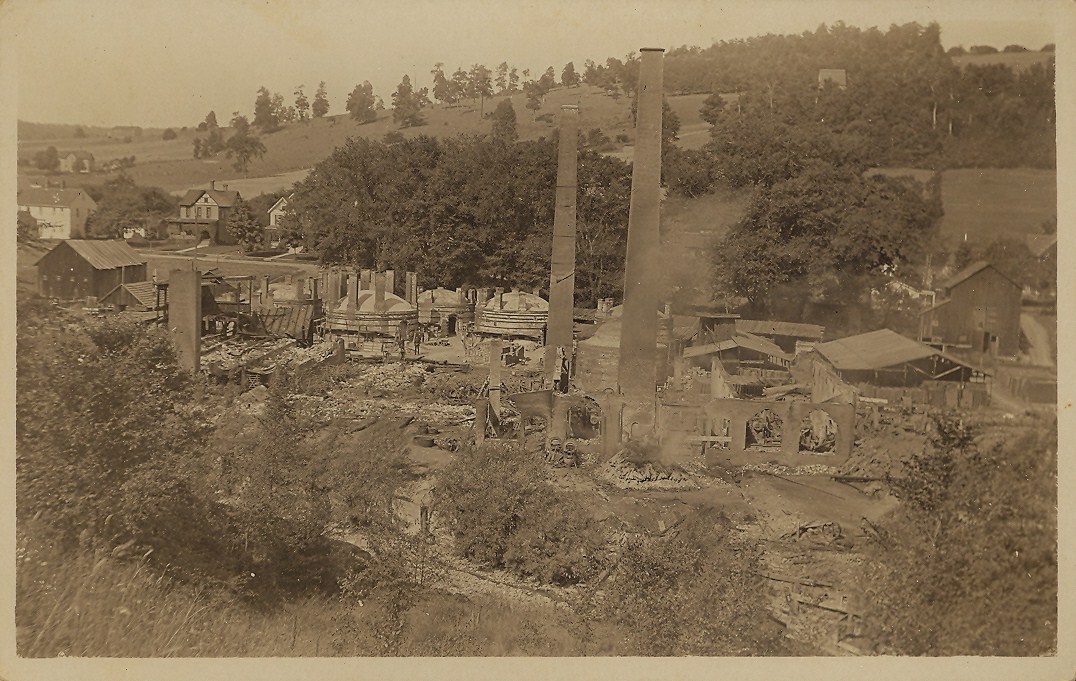|
Stull Observatory
Stull Observatory is an astronomical observatory owned and operated by Alfred University located in Alfred, New York (USA) and named after John Stull, who helped establish the observatory in 1966. It is notable for housing seven independently housed telescopes ranging in size from 8 to 32 inches. The largest, the Austin-Fellows 32 inch Newtonian Reflector is tied with the Vassar College Class of 1951 Observatory for the rank of second largest optical telescope in New York state after the 40 inch telescope at SUNY Oneonta College Observatory. Telescopes at the observatory are regularly opened to the public. The observatory is also used for those pursuing a minor in astronomy or a concentration in astrophysics. History The history of the Stull Observatory goes back to 1863, when the astronomer William A. Rogers ordered and donated a 9-inch refractor with the American optician Henry Fitz. Sometime in the 1920s, with astronomy having been neglected at the Univer ... [...More Info...] [...Related Items...] OR: [Wikipedia] [Google] [Baidu] |
Alfred University
Alfred University is a private university in Alfred, New York. It has a total undergraduate population of approximately 1,600 students. The university hosts the New York State College of Ceramics, which includes The Inamori School of Engineering and the School of Art and Design. History Alfred University was founded as a non-sectarian select school by Seventh Day Baptists. In 1836, Bethuel C. Church, a Seventh Day Baptist, was asked to organize a college in Alfred and began teaching, receiving financial assistance from the Seventh Day Baptist Educational Society with resources, in part, from "Female Educational Societies" of local churches. Unusual for the time, the school was co-educational, and within its first 20 years, it also enrolled its first African-American and Native American students. From its founding as a select school, the institution received a charter as Alfred Academy from the New York State Board of Regents in 1842. Focused initially on the education of teach ... [...More Info...] [...Related Items...] OR: [Wikipedia] [Google] [Baidu] |
Vassar College
Vassar College ( ) is a private liberal arts college in Poughkeepsie, New York, United States. Founded in 1861 by Matthew Vassar, it was the second degree-granting institution of higher education for women in the United States, closely following Elmira College. It became coeducational in 1969 and now has a gender ratio at the national average. The college is one of the historic Seven Sisters, the first elite women's colleges in the U.S., and has a historic relationship with Yale University, which suggested a merger before they both became coeducational institutions. About 2,450 students attend the college. As of 2021, its acceptance rate is 19%. The college offers B.A. degrees in more than 50 majors and features a flexible curriculum designed to promote a breadth of studies. Student groups at the college include theater and comedy organizations, a cappella groups, club sports teams, volunteer and service groups, and a circus troupe. Vassar College's varsity sports teams, ... [...More Info...] [...Related Items...] OR: [Wikipedia] [Google] [Baidu] |
List Of Astronomical Observatories
This is a list of astronomical observatories ordered by name, along with initial dates of operation (where an accurate date is available) and location. The list also includes a final year of operation for many observatories that are no longer in operation. While other sciences, such as volcanology and meteorology, also use facilities called observatories for research and observations, this list is limited to observatories that are used to observe celestial objects. Astronomical observatories are mainly divided into four categories: space-based, airborne, ground-based, and underground-based. Many modern telescopes and observatories are located in space to observe astronomical objects in wavelengths of the electromagnetic spectrum that cannot penetrate the Earth's atmosphere (such as ultraviolet radiation, X-rays, and gamma rays) and are thus impossible to observe using ground-based telescopes. Being above the atmosphere, these space observatories can also avoid the effects of at ... [...More Info...] [...Related Items...] OR: [Wikipedia] [Google] [Baidu] |
Heliostat
A heliostat (from '' helios'', the Greek word for ''sun'', and ''stat'', as in stationary) is a device that includes a mirror, usually a plane mirror, which turns so as to keep reflecting sunlight toward a predetermined target, compensating for the sun's apparent motions in the sky. The target may be a physical object, distant from the heliostat, or a direction in space. To do this, the reflective surface of the mirror is kept perpendicular to the bisector of the angle between the directions of the sun and the target as seen from the mirror. In almost every case, the target is stationary relative to the heliostat, so the light is reflected in a fixed direction. According to contemporary sources the heliostata, as it was called at first, was invented by Willem 's Gravesande (1688–1742). Other contenders are Giovanni Alfonso Borelli (1608–1679) and Daniel Gabriel Fahrenheit (1686–1736). A Heliostat designed by George Johnstone Storey is in the Science Museum Group co ... [...More Info...] [...Related Items...] OR: [Wikipedia] [Google] [Baidu] |
Henry Fitz
Henry Fitz Jr. (December 31, 1808 - November 7, 1863) was an American engineer, scientist, locksmith, optician, inventor and a pioneer of photography in the United States. Personal life Fitz was born in Newburyport, Massachusetts on December 31, 1808. He married Julia Ann Wells of Southold, Long Island in June 1844. Career and death After returning from a trip in Europe in December 1839, he entered partnership with Alexander Wolcott and John Johnson to solve the problem of making daguerreotype portraits. Johnson fell ill, however, and work only resumed in January 1840. These experiments led Wolcott to patent a special mirror camera. Wolcott and Johnson opened the first photo studio in the world in March 1840. Fitz opened his own daguerreotype studio in Baltimore in June 1840. A group of daguerreotypes, from the early experimentation with Wolcott and Johnson as well as later studio portraits, were discovered and sold at auction in 2021. Fitz’s telescope business was ... [...More Info...] [...Related Items...] OR: [Wikipedia] [Google] [Baidu] |
SUNY Oneonta College Observatory
The SUNY Oneonta College Observatory is an astronomical observatory in Oneonta, New York. The observatory is home to the largest optical telescope in New York: a 1-meter (40 inch) Newtonian reflector. It is also believed to be the one of the largest telescopes open for public observing east of the Mississippi. The telescope was constructed by JMI Telescopes of Lakewood, Colorado. The JMI website quotes the cost of the telescope at $159,000. The JMI design is more cost-effective than other telescopes because of its dobsonian mount and optical system. SUNY Oneonta acquired the telescope in 2006 for less than $150,000. After construction of a new dedicated observatory building, the telescope had a "first light" ceremony on May 30, 2009. The observatory is located off the main campus of SUNY Oneonta at the Oneonta College Camp, and contains several instruments. There is a 16-inch Meade LX200 Schmidt-Cassegrain telescope (SCT) and a 14-inch Celestron CGE1400 Schmidt-Cassegrain tele ... [...More Info...] [...Related Items...] OR: [Wikipedia] [Google] [Baidu] |
Class Of 1951 Observatory
The Class of 1951 Observatory is located near the eastern edge of the town of Poughkeepsie, New York, on Vassar College's campus. The observatory was built in 1997 and sponsored by the Vassar class of 1951 who donated funds for its construction on the occasion of their forty-fifth reunion. The new observatory replaced the Maria Mitchell Observatory, the first building completed on the college's campus. Roth and Moore Architects designed the new building which consists of three distinct segments: a central connecting area with a half round roof oriented southward, and two domes (one east and one west) that house the telescopes. The observatory facility houses two main telescopes: one 20-inch reflector used primarily for public outreach, and a 32-inch reflector used for teaching and research. It also houses a five-inch solar telescope and an eight-inch refracting telescope. The 32-inch telescope is tied with the Austin-Fellows telescope of the Stull Observatory at Alfred Universit ... [...More Info...] [...Related Items...] OR: [Wikipedia] [Google] [Baidu] |
John Stull
John Stull (August 30, 1920 – June 8, 2011) was an American politician. He served as a Republican member for the 80th district of the California State Assembly. He also served as a member for the 38th district of the California State Senate. Life and career Stull was born in Corwith, Iowa. He attended the University of Iowa and served in the United States Navy during World War II World War II or the Second World War, often abbreviated as WWII or WW2, was a world war that lasted from 1939 to 1945. It involved the vast majority of the world's countries—including all of the great powers—forming two opposing .... In 1966, Stull was elected to represent the 80th district of the California State Assembly, serving until 1973. In the same year, he was elected to represent the 38th district of the California State Senate, serving until 1978. Stull died on June 8, 2011 in Hartville, Missouri, at the age of 88. References 1920 births 2011 deaths Republ ... [...More Info...] [...Related Items...] OR: [Wikipedia] [Google] [Baidu] |
Alfred (town), New York
Alfred is a town in Allegany County, New York, United States. The population was 4,896 at the 2020 census. The Town of Alfred has a village named Alfred in the center of the town. Alfred University and Alfred State College are located in the Village of Alfred. History Allegany County was re-organized on March 11, 1808. "At the same time, the town of Alfred was named and organized by the state legislature as one of five towns formed from the larger town (actually co-extensive with the county) of Angelica: Angelica, Alfred, Caneadea, Nunda, and Ossian." "The naming of Alfred has traditionally been attributed to Alfred the Great. That attribution may never be definitively verified because there appears to be no extant document from the period when the town was named that ties it to King Alfred – i.e., no town, county, or state record regarding the source of the name. Despite that missing documentation—There is, however, evidence in support of the legend, and there are no ... [...More Info...] [...Related Items...] OR: [Wikipedia] [Google] [Baidu] |
Observatory
An observatory is a location used for observing terrestrial, marine, or celestial events. Astronomy, climatology/meteorology, geophysical, oceanography and volcanology are examples of disciplines for which observatories have been constructed. Historically, observatories were as simple as containing an astronomical sextant (for measuring the distance between stars) or Stonehenge (which has some alignments on astronomical phenomena). Astronomical observatories Astronomical observatories are mainly divided into four categories: space-based, airborne, ground-based, and underground-based. Ground-based observatories Ground-based observatories, located on the surface of Earth, are used to make observations in the radio and visible light portions of the electromagnetic spectrum. Most optical telescopes are housed within a dome or similar structure, to protect the delicate instruments from the elements. Telescope domes have a slit or other opening in the roof that can be opened du ... [...More Info...] [...Related Items...] OR: [Wikipedia] [Google] [Baidu] |
Astronomy
Astronomy () is a natural science that studies celestial objects and phenomena. It uses mathematics, physics, and chemistry in order to explain their origin and evolution. Objects of interest include planets, moons, stars, nebulae, galaxies, and comets. Relevant phenomena include supernova explosions, gamma ray bursts, quasars, blazars, pulsars, and cosmic microwave background radiation. More generally, astronomy studies everything that originates beyond Earth's atmosphere. Cosmology is a branch of astronomy that studies the universe as a whole. Astronomy is one of the oldest natural sciences. The early civilizations in recorded history made methodical observations of the night sky. These include the Babylonians, Greeks, Indians, Egyptians, Chinese, Maya, and many ancient indigenous peoples of the Americas. In the past, astronomy included disciplines as diverse as astrometry, celestial navigation, observational astronomy, and the making of calendars. ... [...More Info...] [...Related Items...] OR: [Wikipedia] [Google] [Baidu] |




